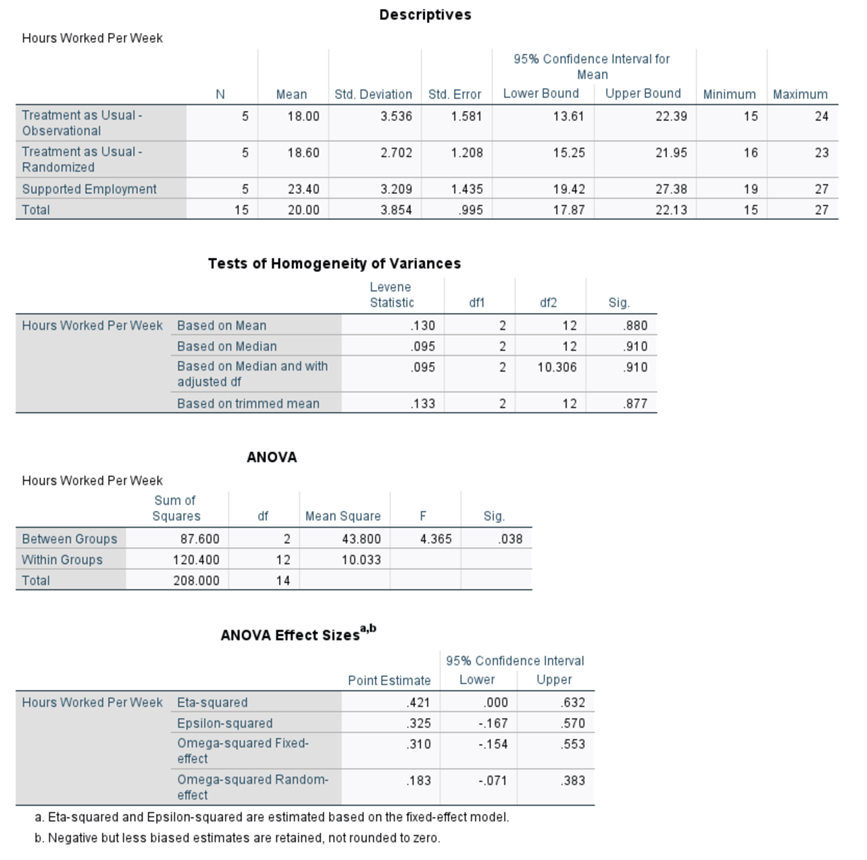Question
Using the example from Ottomanelli and colleagues (2012), participants were randomized to receive Supported Employment or treatment as usual. A third group, also a treatment
Using the example from Ottomanelli and colleagues (2012), participants were randomized to receive Supported Employment or treatment as usual. A third group, also a treatment as usual group, consisted of a non-randomized observational group of participants. A simulated subset was selected for this example so that the computations would be small and manageable. The independent variable in this example is treatment group (Supported Employment, Treatment as Usual- Randomized, and Treatment as Usual-Observational/Not Randomized), and the dependent variable was the number of hours worked post-treatment. Supported employment refers to a type of specialized interdisciplinary vocational rehabilitation designed to help people with disabilities obtain and maintain community-based competitive employment in their chosen occupation (Bond, 2004). The null hypothesis is: "There is no difference between the treatment groups in post-treatment number of hours worked among veterans with spinal cord injuries."

Step by Step Solution
There are 3 Steps involved in it
Step: 1

Get Instant Access to Expert-Tailored Solutions
See step-by-step solutions with expert insights and AI powered tools for academic success
Step: 2

Step: 3

Ace Your Homework with AI
Get the answers you need in no time with our AI-driven, step-by-step assistance
Get Started


